By Dan Weisz
A friend told me about some Great Horned Owls in her neighborhood that were appearing at sunset somewhat regularly . Of course, I had to see if I could find them. As I drove to her neighborhood it began to drizzle rain- taking photographs in the rain is no fun. I arrived at the location she had shared with me, drove around a bit, and then spotted an adult owl on a perfect perch: atop a tree trunk and right out in the open.
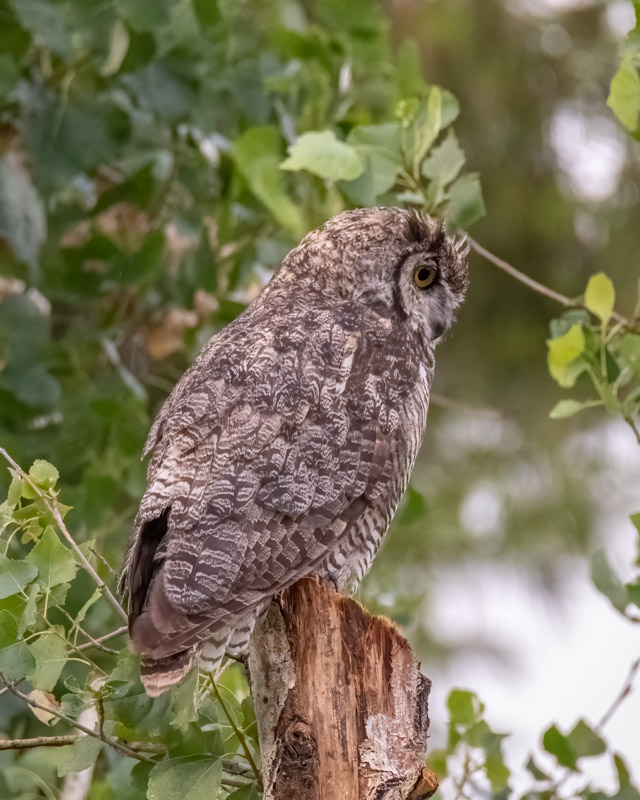
Framed by the green leaves, the Great Horned Owl was quite active, both looking around and turning around.
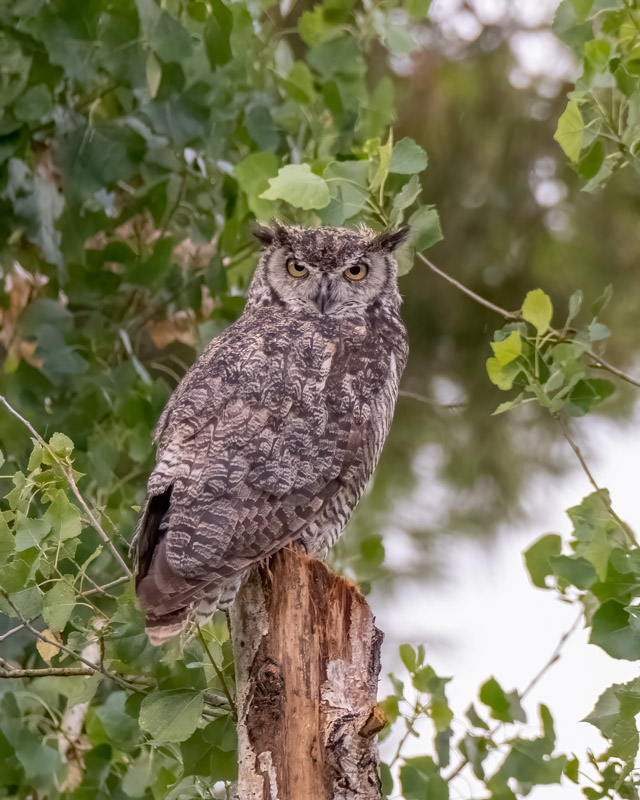
She poofed her feathers out, perhaps to dry them or to stay warmer in the cool rain.
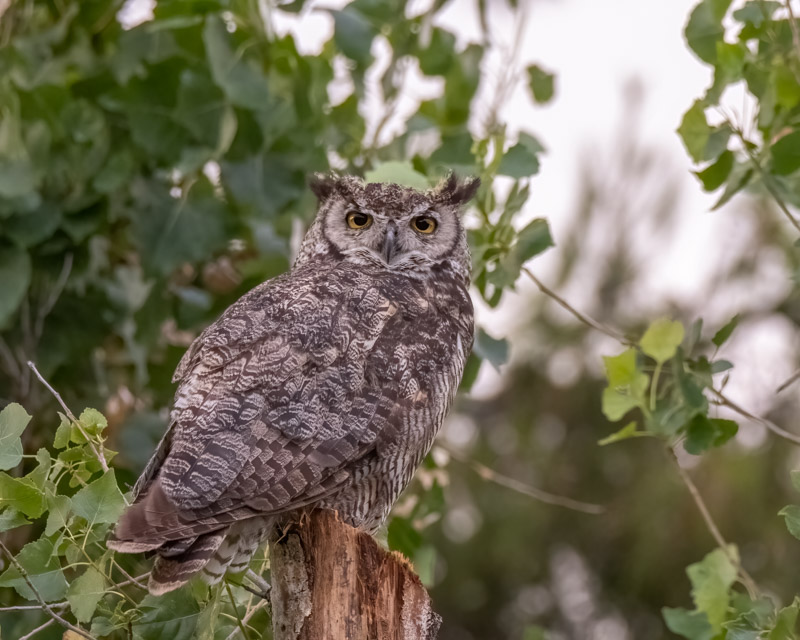
She has her feather tufts (the plumicorns) flattened in this shot. I’m not sure if was the rain doing that or just a relaxed attitude on her part for a moment.
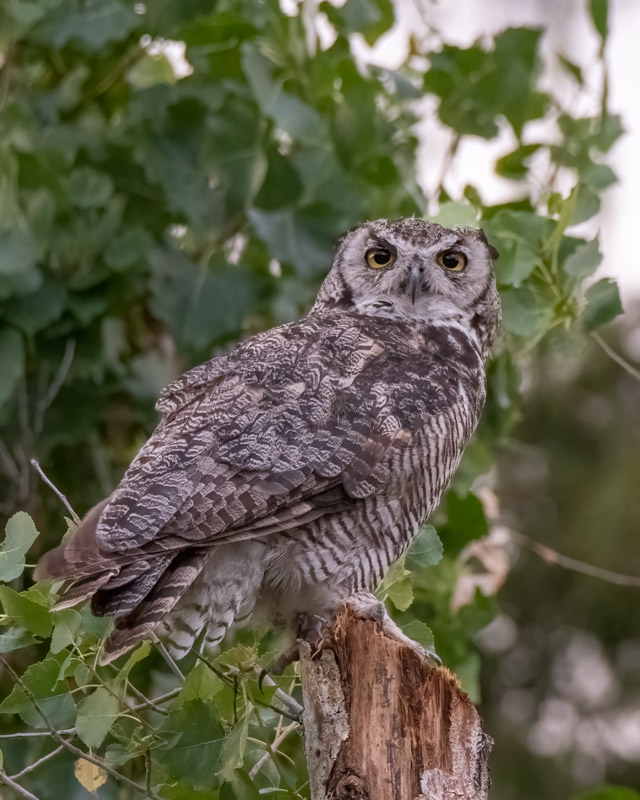
It was overcast and close to sunset. My friend had shared that the owl and her three ‘children’ often congregated at this spot at or after sunset. I am certain she was looking around to either locate the little ones or to keep watch for them, waiting for them to appear. She sure seemed to be alert as an anxious mom would be.
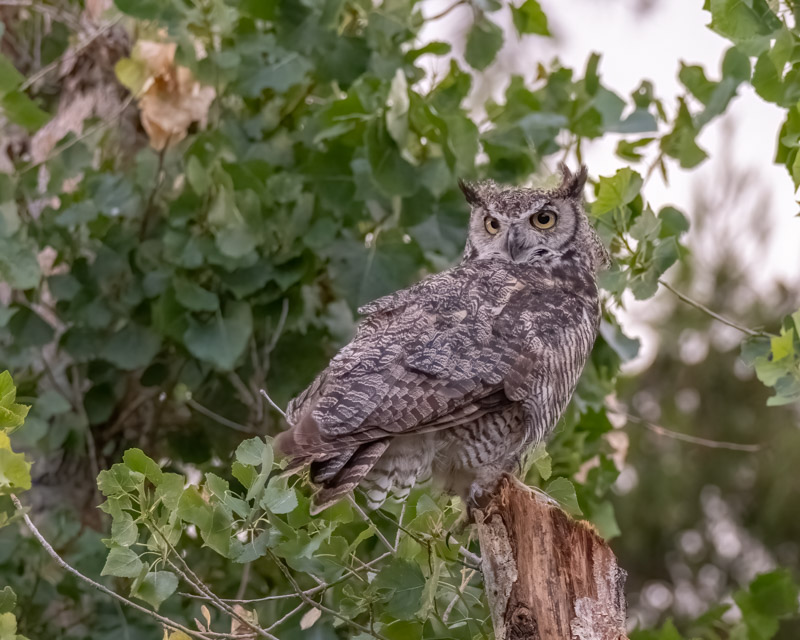
Shortly after the photo below, the youngsters appeared. Mom moved around the area for a while before disappearing behind the nearby house into the mesquite trees in the back. They were too far away and it was too dark for me to take any photos of them so I left.
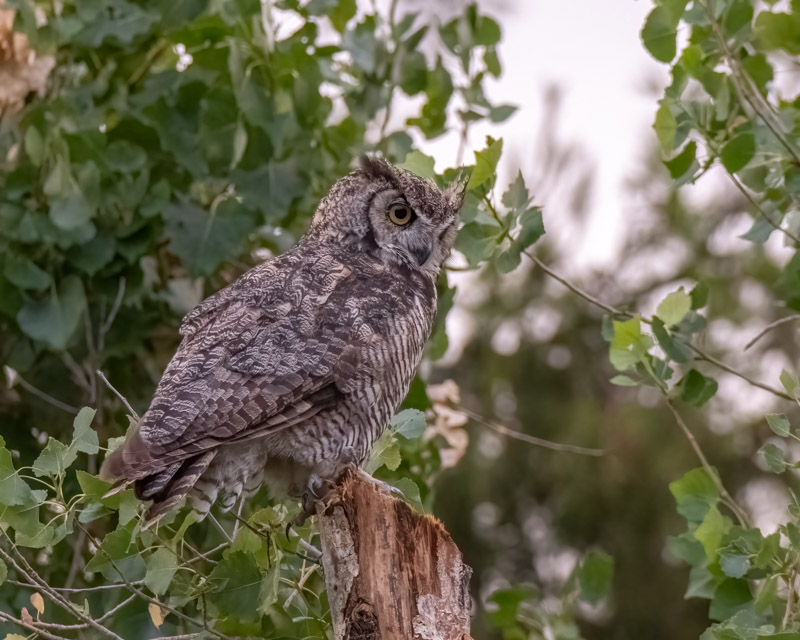
I returned the following evening and it was dark and overcast again. This time, mom perched in a different tree across the street from the previous day’s post. The sun was setting behind her so it was dark where she was sitting. The Great Horned Owl had her eyes on ‘yesterday’s’ tree and the area the young owls were expected to appear. One foot and set of talons are being held in the air.
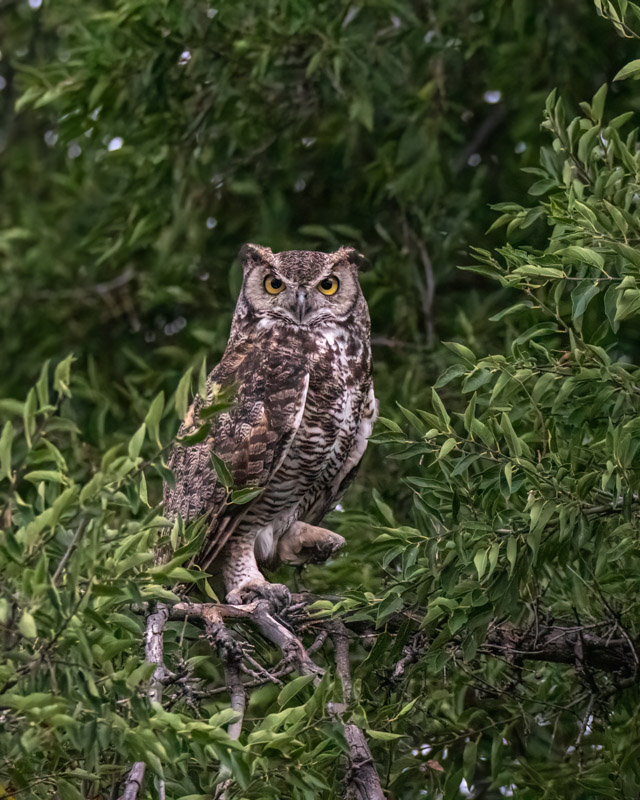
As with her behavior the prior day, the owl was alert and ready for her night to begin. She turned her head often and continued to look around.
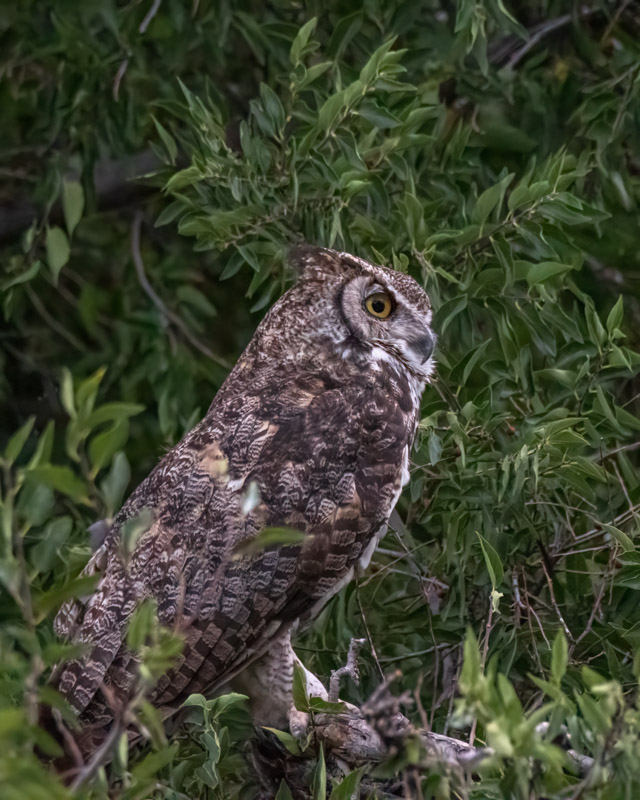
This photo is a close-up meant to have you notice her brood patch. Female birds lose feathers on their breast as they come into breeding season. It allows them to have direct skin-to-egg, and then skin-to-hatchling contact. This provides better warmth to the eggs and baby birds then would happen if there were a thick layer of feathers between them and their mother. As a result of those lost, or molted feathers, there is a clean, vertical line down the middle of the female bird’s breast.
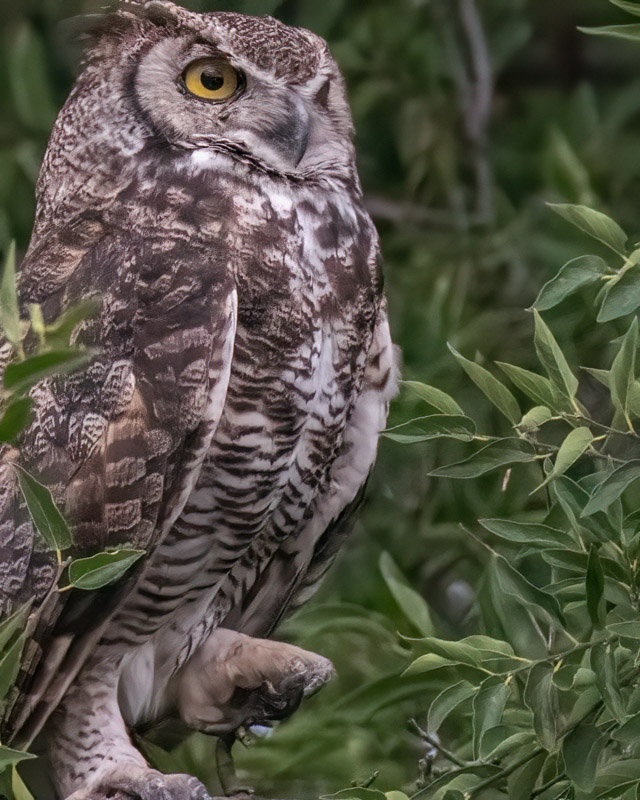
Perhaps this will help you see the brood patch. For more info on brood patches, see https://en.wikipedia.org/wiki/Brood_patch or, from Stanford, https://web.stanford.edu/group/stanfordbirds/text/essays/Brood_Patches.html
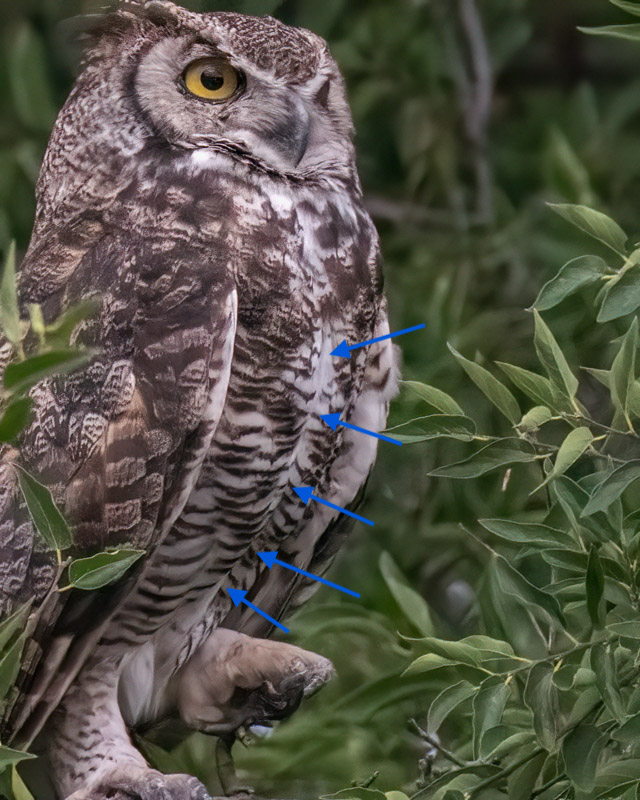
A Fire Engine came through the neighborhood with lights on and making lots of noise, causing the bird to flush and fly across the street and over the houses. I found her in a mesquite tree just north of the houses as the skies darkened and the rain began to fall. After a minute or so, she flew off through the mesquite bosque. My hunch is she flew towards where she thought her babies were perched.
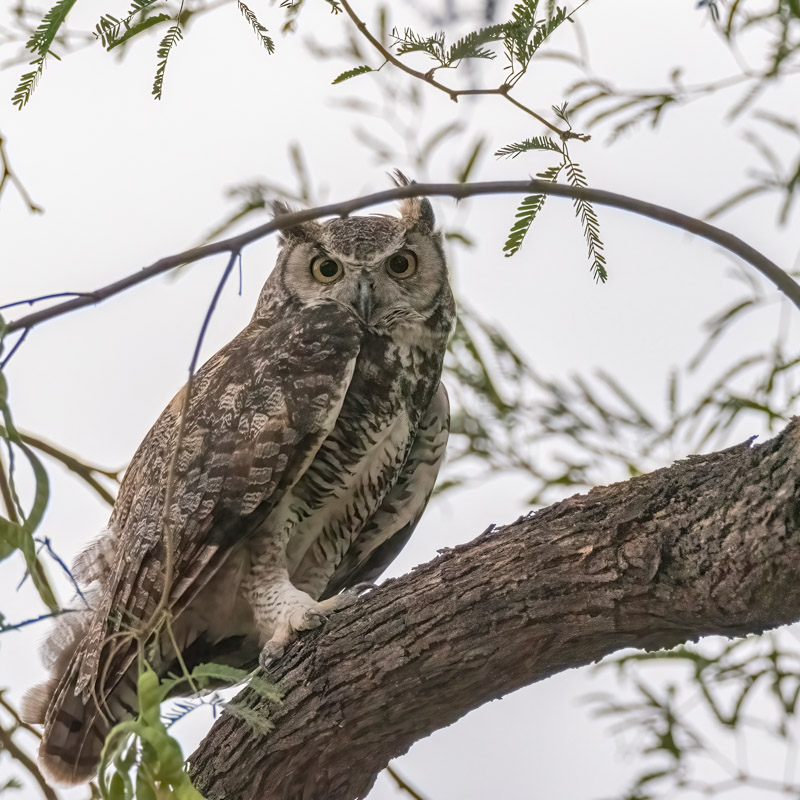
A few days later I learned where the three young Great Horned Owls had been spending time. Driving to the spot in the morning, I found three birds in this tree together. Another owl (not visible here) was on a branch lower and to the right. I am not certain whether these three are all young or there is an adult here with two young. They all had their backs to the sun at this point, mid-day.
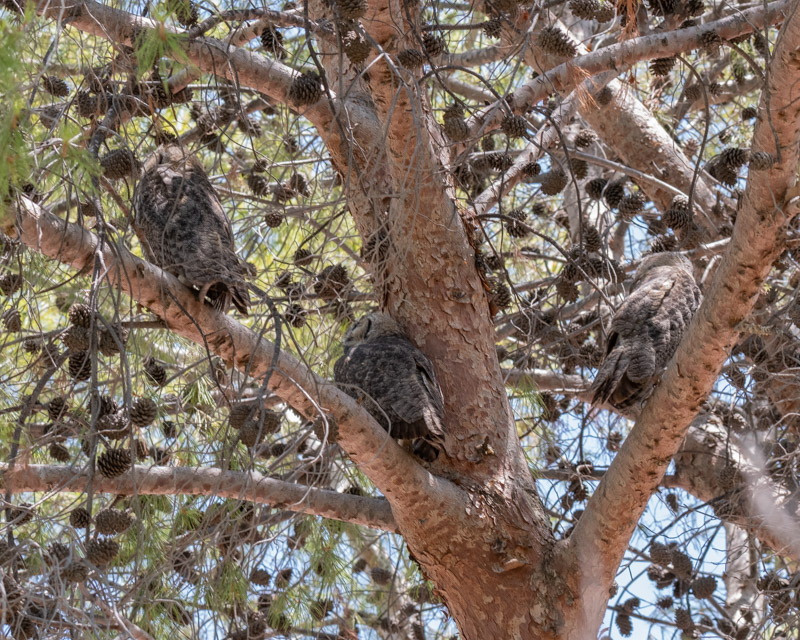
One owlet finally turned and opened its eyes!
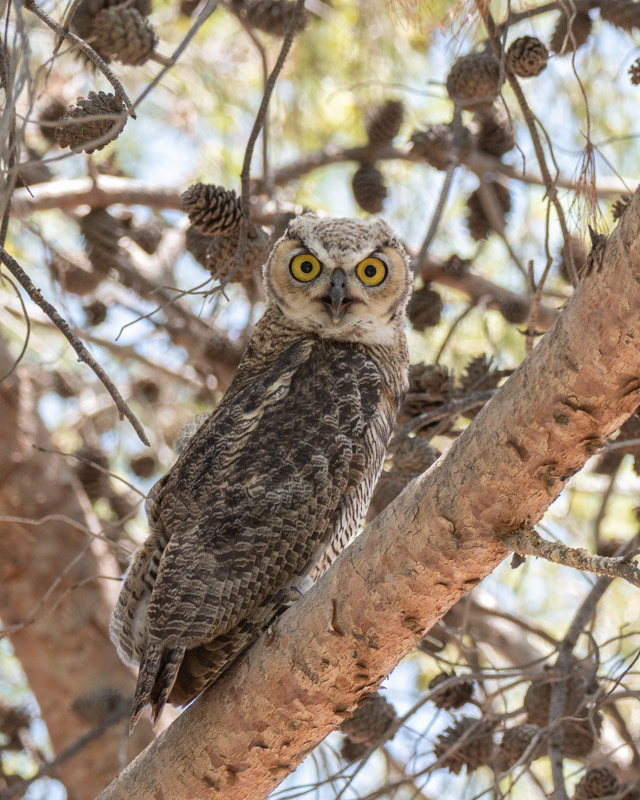
It was curious but still a bit sleepy! Note the lightly feathered eyelid.
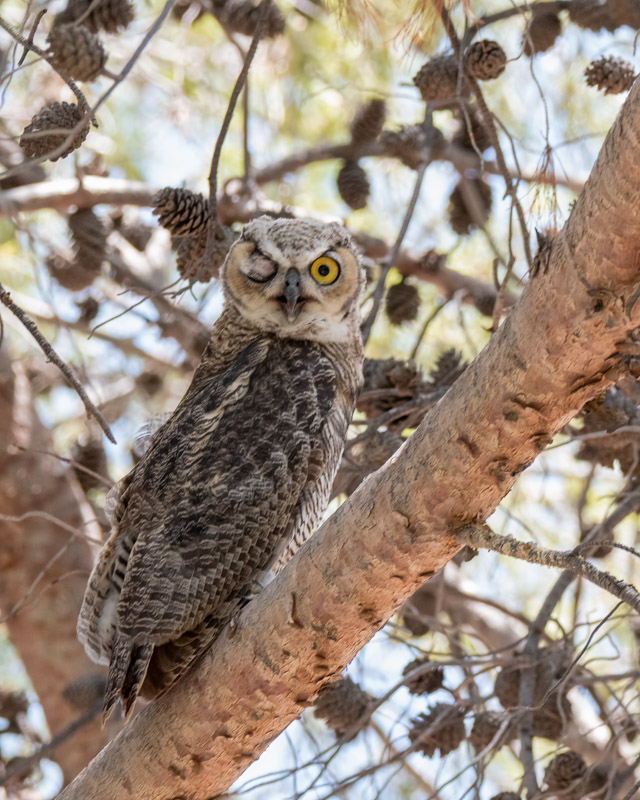
And then it shows me how much it cared that I was there. Fast asleep once again.
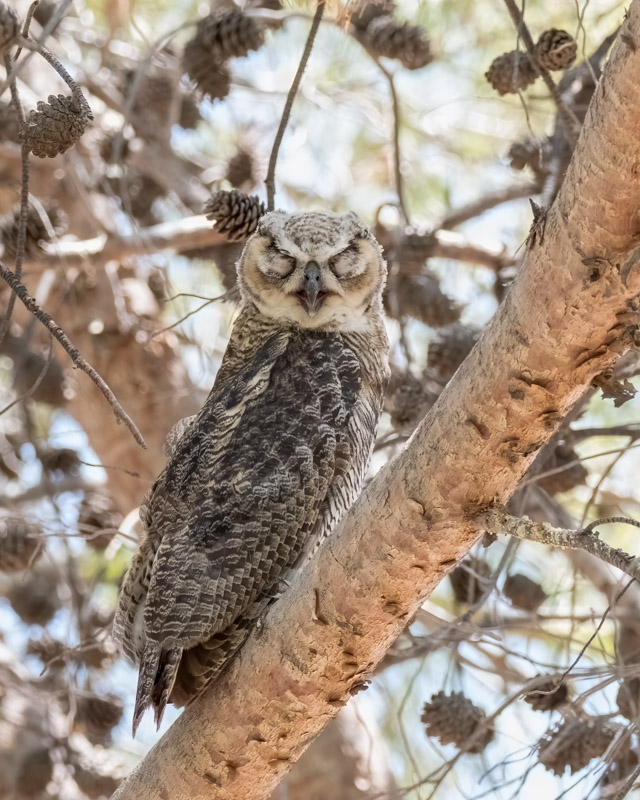
It opened its eyes again and you can see the nictitating membranes engaged. Those are translucent eyelids, a third eyelid for each of the bird’s eyes. They are used to protect the eye while still allowing the bird to look through it.
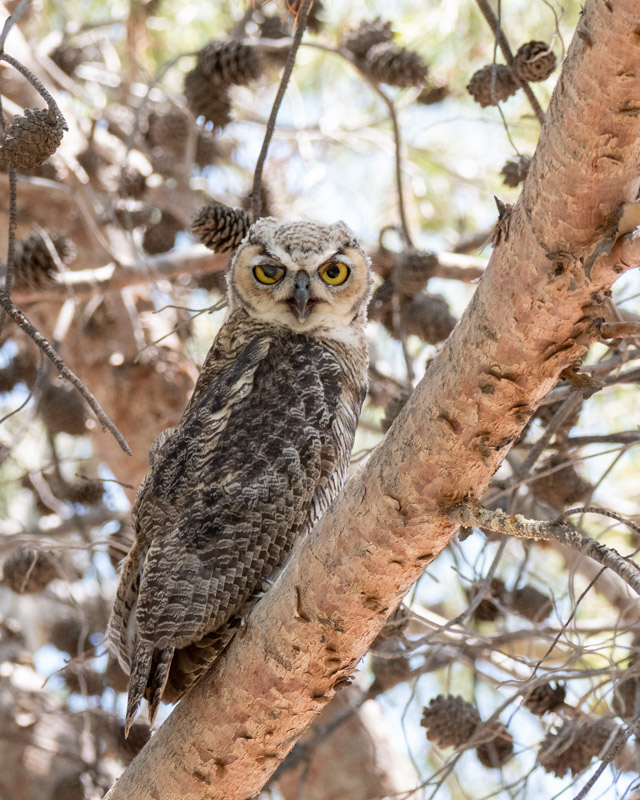
Here is a close-up of the above photo. You have a better look at the nictitating membrane now. Think goggles or sunglasses!
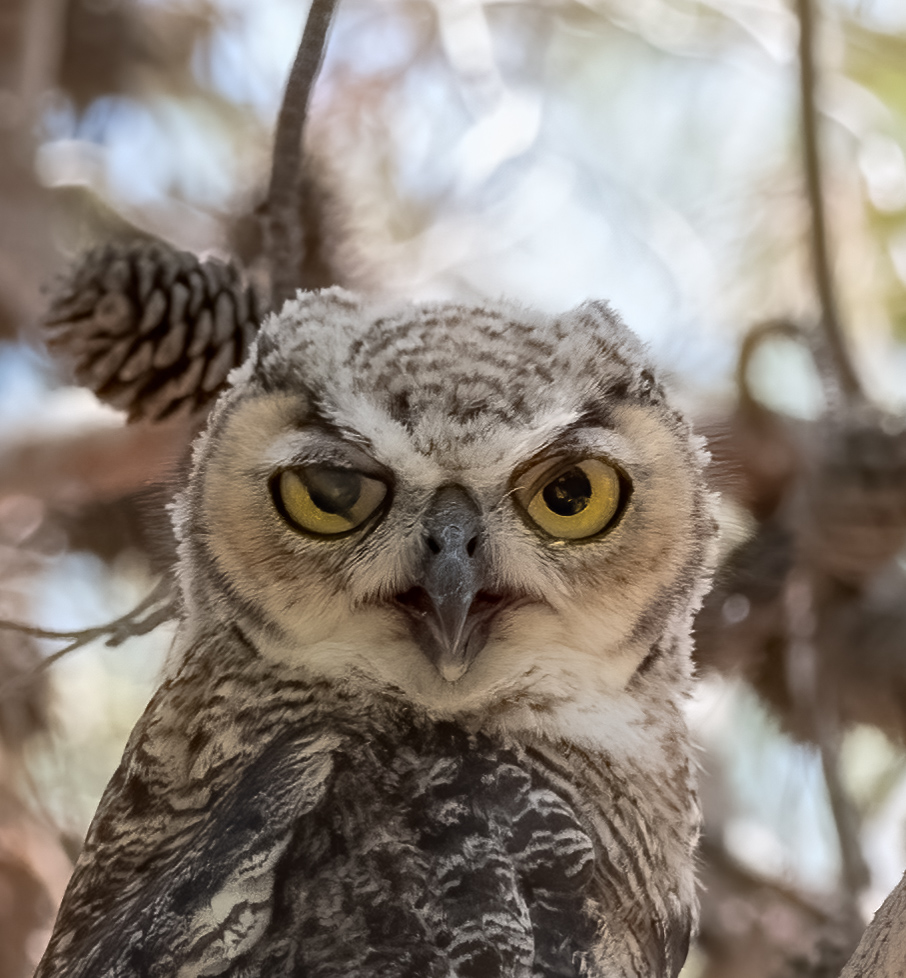
I haven’t found any of the owls since, but I do turn my head and look at those trees every time I drive by the neighborhood. What a treat.
